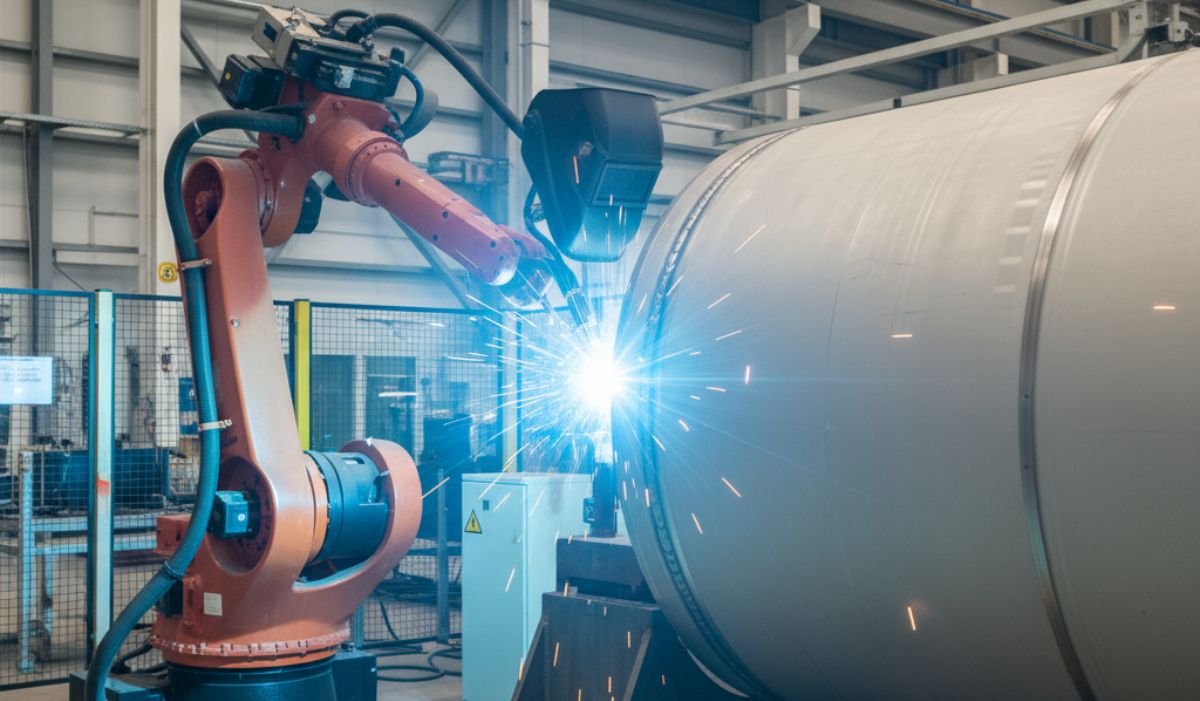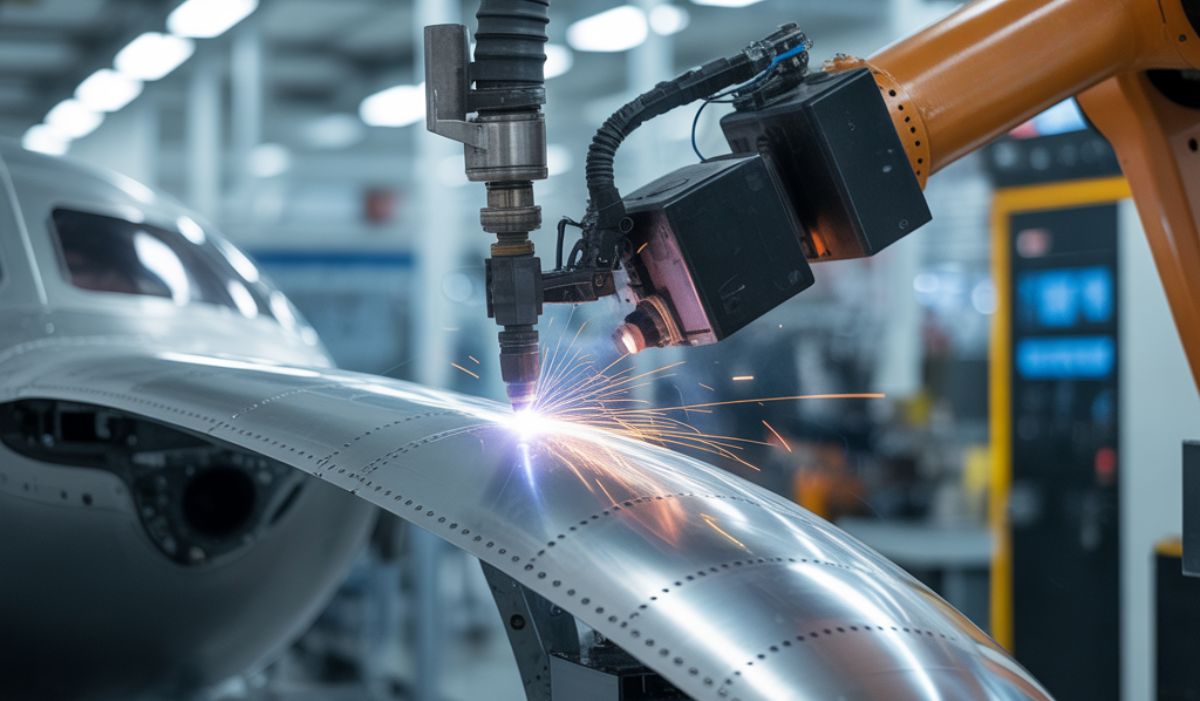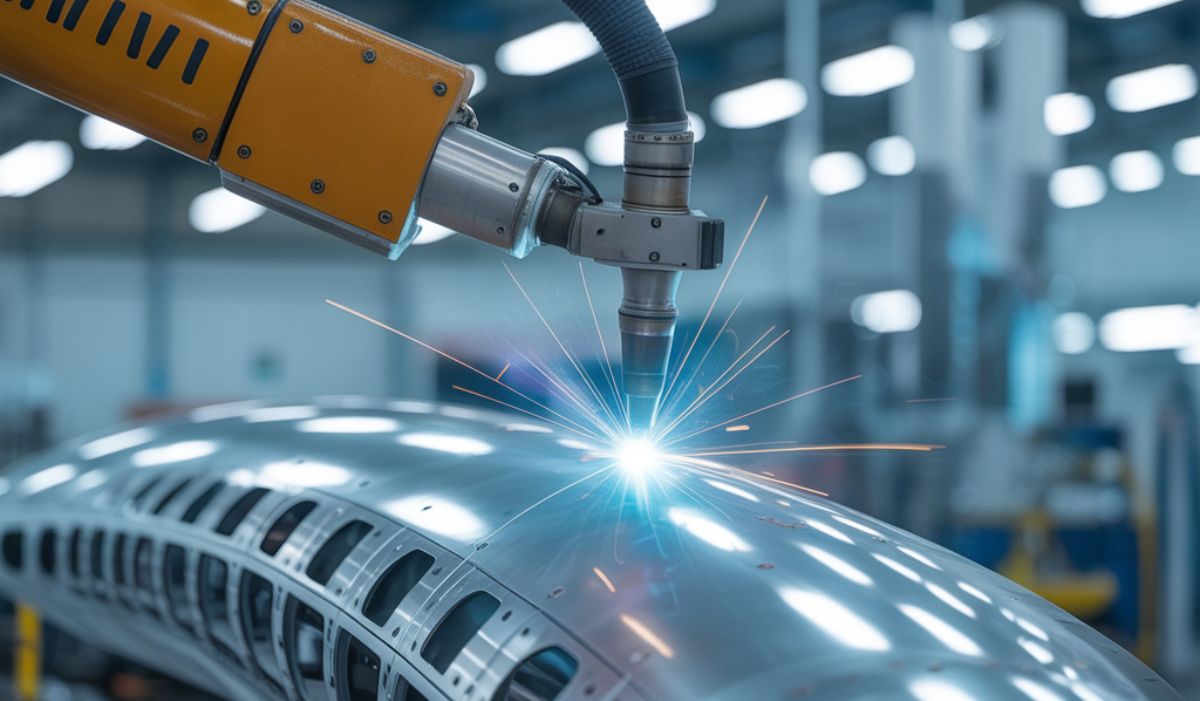Introduction: Automation Takes Flight
In the aerospace industry, precision isn’t optional — it’s a necessity. Every component of an aircraft or spacecraft must meet the highest engineering standards, with zero tolerance for error. As designs grow more complex and lightweight materials become common, traditional welding techniques often struggle to meet these extreme requirements.
That’s where robotic welding for the aerospace industry is taking center stage. From spacecraft fuel tanks to aircraft fuselage structures, robotic systems ensure unmatched consistency, accuracy, and safety.
In India, companies like Parc Robotics are contributing to this automation revolution by developing advanced robotic welding and automation solutions tailored for aerospace manufacturing.
Why Robotic Welding is Critical in Aerospace Manufacturing
Aerospace welding demands perfection. Unlike other industries, even a microscopic defect in a weld joint can compromise structural integrity or safety during flight. Robotic welding offers the precision and control required to meet these stringent standards.
By using programmable robotic arms, high-resolution sensors, and intelligent controllers, manufacturers can achieve micron-level accuracy on critical joints. Whether it’s the structural frame of a commercial jet or the high-pressure components in a rocket engine, robotic systems maintain identical results every single time — something manual welding simply can’t guarantee.
Key Benefits of Robotic Welding for Aerospace Industry
1. Precision Beyond Human Capability
Modern aerospace components require complex welds across curved, thin, or heat-sensitive surfaces. Robots deliver absolute precision, ensuring strong, smooth welds without distortion or human error.
2. Consistent Quality Control
Robots are programmed to maintain the same welding parameters throughout the process. Integrated sensors and vision systems detect any variation in real time, ensuring flawless joints.
3. Handling Lightweight and Exotic Materials
Aerospace manufacturing often involves titanium, aluminum, and Inconel alloys — materials that are difficult to weld manually. Robotic welding provides controlled heat input and stable arc performance, reducing warping or defects.
4. Safety and Efficiency
By removing human operators from high-heat zones, robotic systems enhance workplace safety while maintaining round-the-clock production capacity.
5. Data Traceability and Certification
Each weld can be digitally logged, monitored, and analyzed — a key advantage in aerospace, where traceability is mandatory under global standards like AS9100 and ISO 9001.
Applications of Robotic Welding in Aerospace
Robotic welding plays a crucial role in almost every segment of aircraft and spacecraft manufacturing. Some key applications include:
-
Aircraft Frames and Fuselage Structures – Precision welding for strong, lightweight airframes.
-
Engine Mounts and Exhaust Systems – Ensures thermal resistance and vibration durability.
-
Fuel and Cryogenic Tanks – Leak-free welds for extreme pressure and temperature environments.
-
Landing Gear Assemblies – Reinforced joints for load-bearing strength.
-
Satellite and Rocket Components – Complex geometries requiring millimeter accuracy.
In each of these areas, robotic welding systems enable reliable and repeatable welds under tight tolerances — essential for aerospace safety and performance.
Advanced Welding Technologies Driving Aerospace Innovation
The aerospace sector continuously pushes the limits of what’s possible. As a result, new robotic welding technologies are transforming production lines worldwide:
-
Laser Welding: Delivers deep penetration with minimal heat input, ideal for thin materials.
-
Friction Stir Welding (FSW): Joins aluminum and advanced alloys without melting, maintaining structural integrity.
-
Hybrid Robotic Welding: Combines arc and laser techniques for superior speed and strength.
-
AI-Powered Vision Systems: Detect micro-defects and adjust parameters in real time.
These innovations ensure that robotic welding remains at the forefront of aerospace engineering, combining strength, precision, and performance in one seamless process.
Challenges in Aerospace Welding and How Robotics Solves Them
Aerospace welding isn’t without its difficulties. Engineers must manage thermal distortion, tight geometries, and the risk of contamination — all while maintaining micron-level accuracy.
Here’s how robotic welding tackles these challenges:
-
Precision Path Programming: Robots follow complex 3D paths accurately with the help of advanced motion control.
-
Adaptive Heat Management: Intelligent sensors regulate arc temperature to avoid distortion in thin alloys.
-
Real-Time Monitoring: Cameras and sensors ensure weld integrity and provide instant feedback.
-
Reduced Rework: Predictive AI models identify issues before they occur, minimizing waste and rework costs.
The result is a cleaner, faster, and more reliable process that aligns with the aerospace industry’s strict performance standards.
The Future of Aerospace Welding: Smart, Sustainable, and Connected
The next phase of robotic welding in aerospace is driven by artificial intelligence, IoT, and digital manufacturing.
AI algorithms now allow welding robots to self-learn and self-correct, improving with every production cycle.
Meanwhile, IoT-enabled systems collect data from sensors, providing real-time insights into energy usage, weld strength, and quality trends.
Sustainability is also a growing priority. Modern robotic welding systems consume less energy, produce minimal waste, and use cleaner gases — supporting global goals for carbon-neutral aerospace production.
As automation expands, we can expect to see fully integrated “smart welding cells” connected to digital twin environments, offering virtual simulations, predictive maintenance, and instant process optimization.
FAQs on Robotic Welding for Aerospace Industry
1. What is robotic welding in the aerospace industry?
It’s the use of advanced robotic systems to weld aircraft and spacecraft components with extreme precision, ensuring structural safety and reliability under demanding conditions.
2. Why is robotic welding important in aerospace manufacturing?
Because it guarantees accuracy and repeatability for critical parts like fuselages, engines, and fuel tanks — where even the smallest flaw can impact flight safety.
3. Which materials are commonly welded using robotic systems in aerospace?
Robotic welding is ideal for titanium, aluminum, stainless steel, and Inconel, which require controlled heat and precise weld penetration.
4. What types of welding are used in aerospace robotics?
Common processes include TIG welding, laser welding, and friction stir welding, chosen based on material properties and design needs.
5. How is automation shaping the future of aerospace welding?
AI, IoT, and digital twin integration are making robotic welding smarter — with real-time monitoring, predictive analytics, and sustainable manufacturing practices leading the way.
Conclusion

From aircraft frames to spacecraft assemblies, these advanced systems deliver unmatched strength, accuracy, and consistency.
By combining AI, robotics, and data analytics, manufacturers are building safer and more efficient aircraft — while setting new benchmarks for sustainability and innovation.
The aerospace industry isn’t just flying higher; it’s welding smarter.


